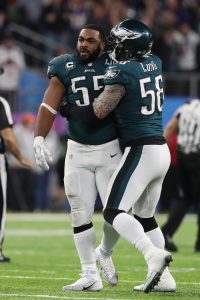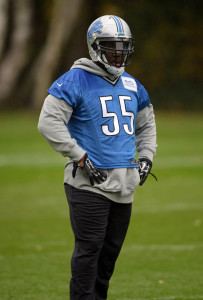Last year, the Eagles tacked some incentives onto Brandon Graham‘s deal amidst rumblings that he was considering a holdout. Graham is once again pushing for an extension as he nears his walk year, but this time around, it’ll take more than an extra $1.5MM in performance bonuses to satisfy him. 
Graham is among the best 4-3 defensive ends in the game today, but his current salary does not reflect his performance. His average of $6.5MM/year on his current contract ranks 20th among 4-3 DEs, despite the fact that he graded out as the eighth-best overall edge defender in the league last year.
The veteran is coming off of a career-high 9.5 sacks and even iced the Eagles’ Super Bowl victory with his late-game strip sack of Tom Brady. Even though he celebrated his 30th birthday in April, he has plenty of juice as he sits across from GM Howie Roseman at the table.
Recently, Joel Corry of CBSSports.com predicted that Graham would not accept anything less than Everson Griffen‘s four-year, $58MM extension with the Vikings, which includes $18.8MM in full guarantees. Graham is 30, but Griffen is a few months older than him and is arguably the lesser player of the two, despite his 13 sacks in 2017.
The Eagles want to keep Graham in the fold, but their tight cap situation may limit how far they can go. A creative workaround for both sides may be to give Graham an even greater guarantee percentage than Griffen. After the Vikings gave Griffen a healthy 32.4% fully guaranteed at signing, the Eagles may be willing to push that number closer to 40% in order to shave some dollars off of the overall total. It wouldn’t be completely unprecedented – the Giants guaranteed $40MM of Olivier Vernon‘s $85MM free agent deal in 2016, which accounts for 47% of his deal.
Graham’s age and recent offseason ankle surgery may give the Eagles some pause about a hefty guarantee, but the former first round pick has not missed significant time since the 2011 season. There are worse bets to make, and a fat guarantee could give the Eagles the flexibility they’ll need to retain players like running back Jay Ajayi, cornerback Ronald Darby, and wide receiver Nelson Agholor down the line.


